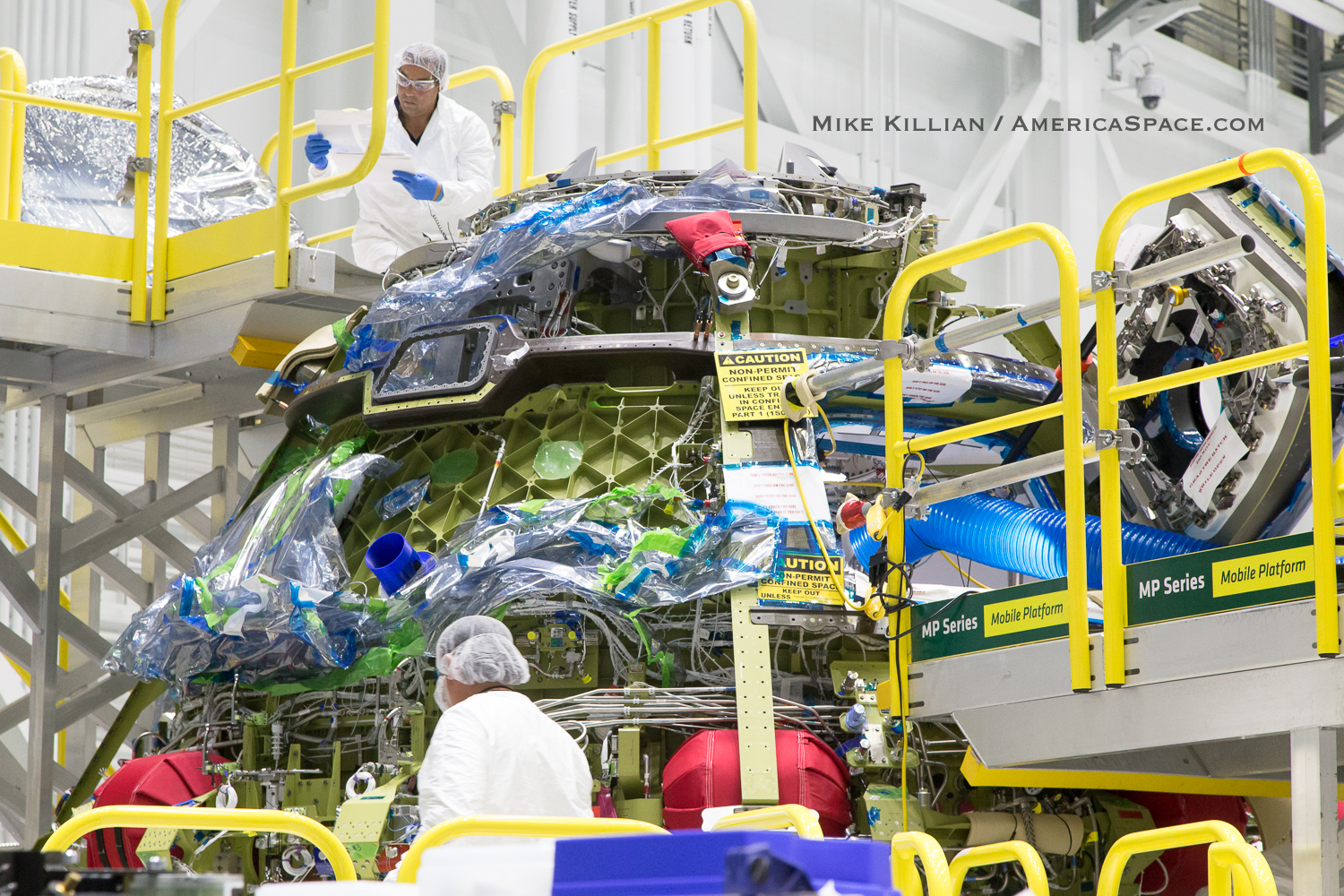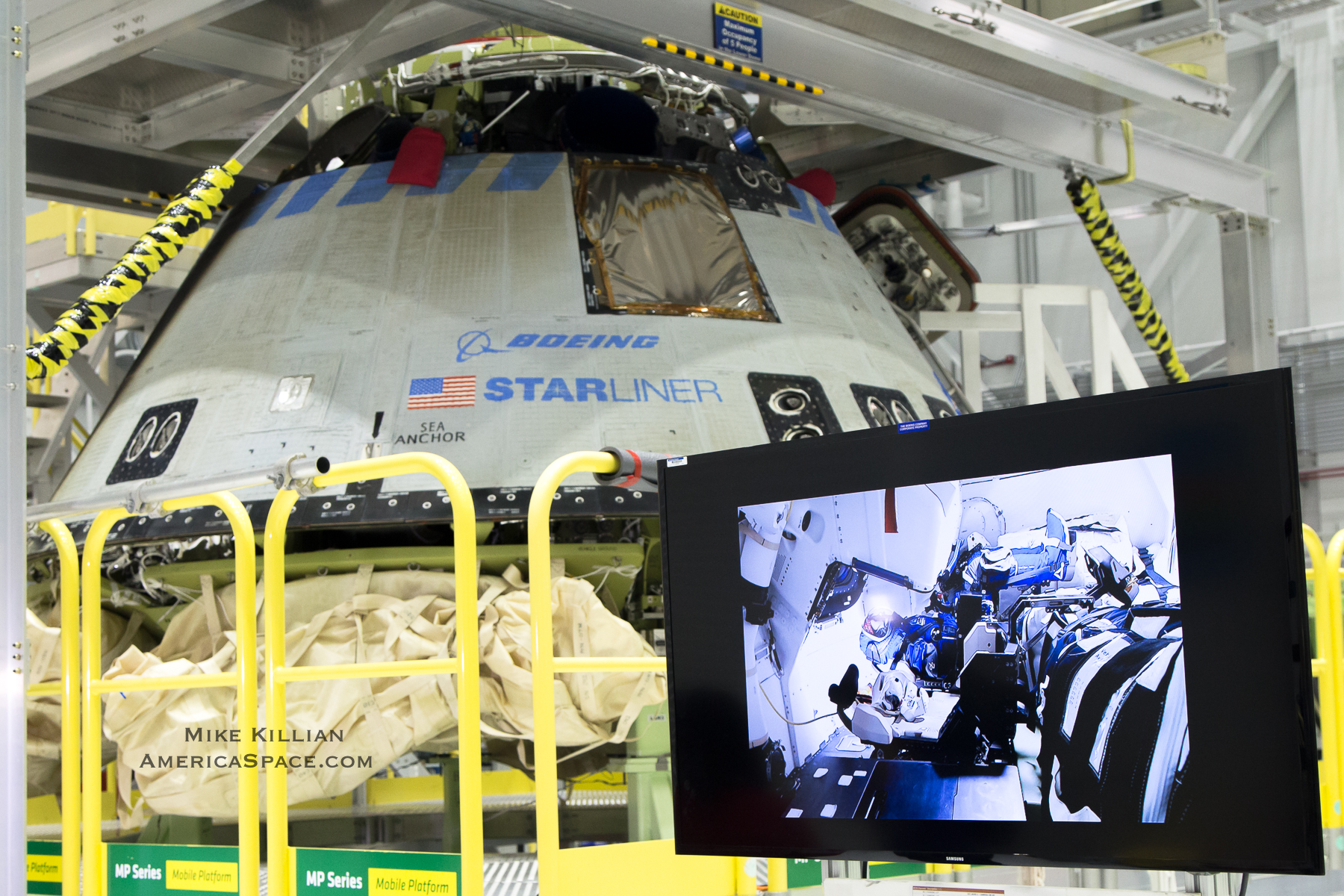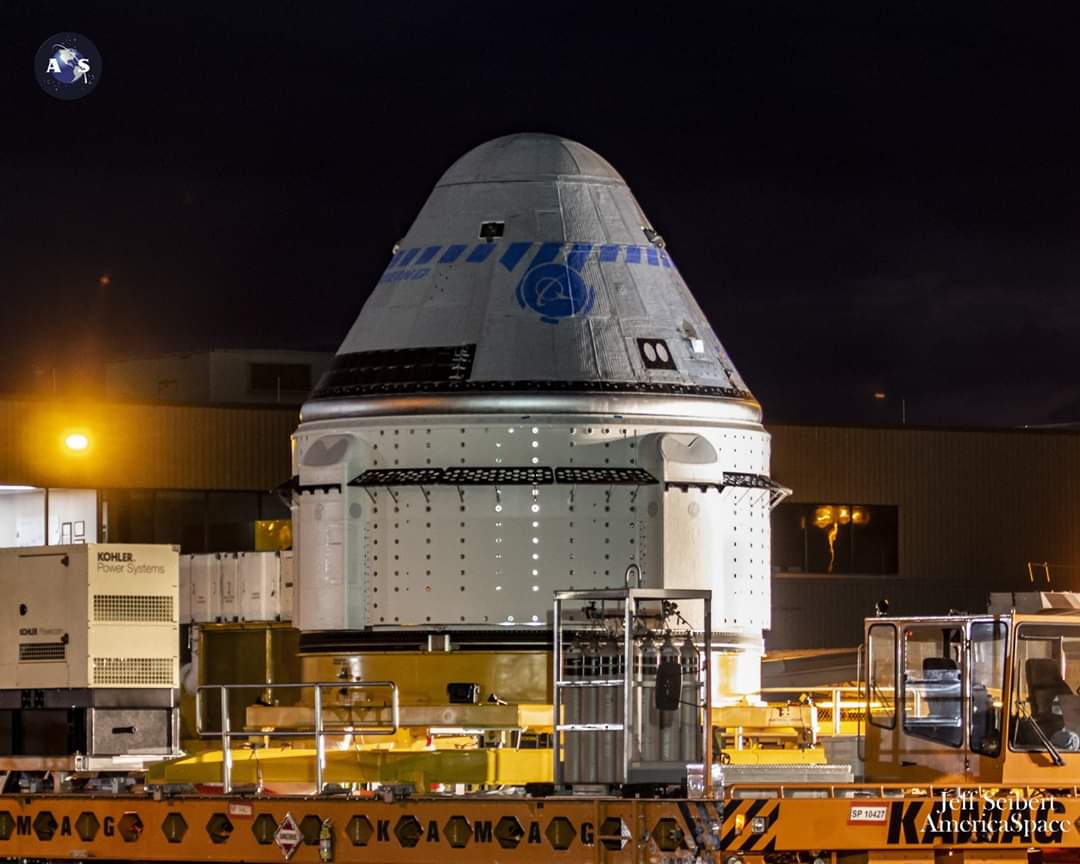
NASA and Boeing are targeting December 2020 to re-fly an un-crewed Orbital Flight Test (OFT) with the company’s CST-100 Starliner Crew Capsule, pending hardware readiness, flight software qualification, and launch vehicle and space station manifest priorities.
OFT-2 will come a full year after OFT-1, which was launched flawlessly by ULA and their workhorse Atlas V rocket for a planned week-long mission, but suffered a number of off-nominal issues which prevented Starliner from docking at the International Space Station (ISS) and necessitated a premature return to Earth two days later.
The spacecraft has been put through an extensive post-flight analysis and processing ever since, and an independent Boeing-NASA team was formed to review the software anomaly and determine root cause and recommend corrective actions. Boeing and NASA have provided periodic updates throughout the investigation and discovered that the capsule suffered an anomaly due to a mission elapsed timer using an unexpected timeline, which confused Starliner and caused it to use more fuel than needed, which delaying orbital insertion thruster firings.
The issue forced Boeing to abort the International Space Station (ISS), and instead put Starliner in an unplanned stable orbit to save other critical mission test objectives, including the most critical: de-orbit, re-entry and landing at White Sands Missile Range, New Mexico.

“Boeing’s Starliner team focused on readying the next spacecraft for its upcoming flight tests as well as making improvements identified during various review processes throughout the beginning of the year,” says NASA.
In the aftermath of Starliner’s OFT-1 landing, NASA Administrator Jim Bridenstine noted that “a lot of things went right” and many challenging test objectives were satisfactorily completed. One of the most significant was the first successful “land” landing of a human-rated crew capsule in U.S. spaceflight history; all previous capsules—Mercury, Gemini, Apollo and Crew Dragon—were and are designed to splashdown in the ocean at the end of their missions. However, Mr. Bridenstine stressed that the problems were a good example of “why we test”.

In early March, the joint NASA/Boeing Independent Review Team (IRT) completed its initial investigation, which centered upon three principal anomalies. Two of these were classified as “software coding errors”. Firstly, the Starliner incorrectly synced its Mission Elapsed Timer (MET) with the Atlas V before the onset of the terminal countdown, which led the spacecraft to presume it was at a different stage of the mission following separation from the rocket. As a result, it did not conduct the correct maneuvers at the right time. Secondly, the MET anomaly led to a review of other flight phases, which led to the detection and correction of another software issue which might have impaired the successful separation and disposal of Starliner’s service module at the end of the mission.
“Regarding the first two anomalies, the team found the two critical software defects were not detected ahead of flight despite multiple safeguards,” NASA noted in February. “Ground intervention prevented loss of vehicle in both cases. Breakdowns in the design and code phase inserted the original defects. Additionally, breakdowns in the test and verification phase failed to identify the defects preflight despite their detectability. While both errors could have led to risk of spacecraft loss, the actions of the NASA-Boeing team were able to correct the issues and return the Starliner spacecraft safely to Earth.”

The third issue concern revolved around an unexpected loss of Space-to-Ground Communication, where an intermittent forward-link issue impeded flight controllers’ ability to command and control Starliner. This was subsequently traced to radio-frequency interference with the spacecraft’s communications system. Had a human crew been aboard the Starliner, this could have adversely affected Mission Control’s ability to achieve reliable voice communication with the astronauts.
In the aftermath of these findings, it was noted that “several technical and organization issues related to Boeing’s work” had been identified and a self-review by NASA uncovered “several areas where the agency can improve its level of participation and involvement into company’s processes”. An Organizational Safety Assessment (OSA) was executed to evaluate Boeing workplace culture, which included employee interviews and sampling across a broad personnel cross-section in order to achieve “a comprehensive safety assessment”.

As a result, NASA declared the December anomaly as a “High Visibility Close Call”, one of 24 such procedural requirements thus designated since 2004. A particularly significant example of an earlier HVCC occurred back in July 2013, when Italian astronaut Luca Parmitano suffered water intrusion into his helmet during a spacewalk.
NASA outlined the following progress with Starliner as of Aug 28:
———————————————————-
Teams from Boeing are well into final assembly of the crew and service modules that will fly OFT-2 to the space station inside of the company’s Commercial Crew and Cargo Processing Facility (C3PF) at NASA’s Kennedy Space Center in Florida. OFT-2 will fly a new, reusable Starliner crew module providing additional on-orbit experience for the operational teams prior to flying missions with astronauts. For Boeing’s Commercial Crew missions, the Starliner spacecraft will launch atop a United Launch Alliance Atlas V rocket.

With the majority of assembly complete, recent progress is focused on the NASA docking system re-entry cover, which was added to the design for additional protection of the system. The team also has completed the installation of the Starliner propellant heater, thermal protection system tiles and the air bags that will be used when the spacecraft touches down for landing. As final production activities continue to progress, the crew module recently entered acceptance testing, which will prove out the systems on the spacecraft before it’s mated with its service module.
In Houston, the software team is nearing the final stages of modifying and re-verifying the flight code after the first uncrewed flight test. As part of that effort, the team recently began a major milestone called Formal Qualification Testing, which is a comprehensive test of flight software and an important step in preparing for an end-to-end mission rehearsal test.

Boeing also remains focused on incorporating the recommendations from the joint NASA-Boeing Independent Review Team with almost 75% of the 80 proposed actions implemented. The independent team was formed to review anomalies experienced during OFT, which led to Starliner not reaching its planned orbit or docking to station as planned, and to provide recommendations to ensure a robust design for future missions. In addition to opting to re-fly its uncrewed flight test, Boeing elected to comprehensively implement all of the recommendations provided by the review team.
Following a successful OFT-2, Boeing will focus full attention on preparations for its final flight test with astronauts and is already completing work on the Crew Flight Test spacecraft in parallel. Teams continue refurbishing the crew module flown on Starliner’s first uncrewed flight test for reuse with astronauts.
After removing and conducting checkouts on various systems and flight hardware, Boeing is preparing to reassemble the vehicle for flight. Soon, outfitting of the crew module’s interior will begin along with packing parachutes and airbags ahead of installation. The vehicle’s NASA Docking System has been modified to accommodate the new cover, and outfitting of subsystem components continues on the spacecraft’s brand new service module.
————————————————————————
Flight control teams from NASA and Boeing completed an integrated launch-to-docking simulation recently, with additional mission simulations on the horizon as the teams fine-tune flight rules and procedures for OFT-2, which will be followed by Starliner’s first crewed mission, the Crew Flight Test (CFT), currently targeted for no earlier than June 2021.
Recently, the CFT crew helped test software updates with real flight hardware in Boeing’s Avionics and Software Integration Lab in Houston. They practiced performing manual separation events for several low likelihood contingencies, demonstrating the software improvements had no adverse effect on controls needed to stay safe in any situation. The crew also participated in procedural dry runs for future life support tests with the Starliner spacecraft in Florida. Later this year, the CFT crew will be suited inside the spacecraft with the vehicle providing all of their life support.
The first post-certification mission, called Starliner-1, is tentatively scheduled for no earlier than late December 2021 with NASA astronauts Sunita Williams, Josh Cassada and Jeanette Epps.

Aside from its troubles, OFT-1 achieved a number of remarkable successes, including the first “land” landing of a human-rated capsule in U.S. spaceflight history. Additionally, it marked the first successful launch of a human-rated Atlas V and thoroughly checked out Starliner’s propulsion systems, communications systems, navigation systems and the NASA Docking System (NDS) that it will utilize to dock at the ISS.
“As vital as it is to understand the technical causes that resulted in the flight test not fulfilling all of its planned objectives, it’s equally as important to understand how those causes connect to organizational factors that could be contributors,” said Steve Jurczyk, associate administrator at NASA. “That’s why NASA also decided to perform a high visibility close call review that looked at our combined teams.”
OFT-2 will be conducted at no added cost to the government / NASA, says Boeing.
– Written by Mike Killian and Ben Evans
.
.
FOLLOW AmericaSpace on Facebook and Twitter!
.
.





